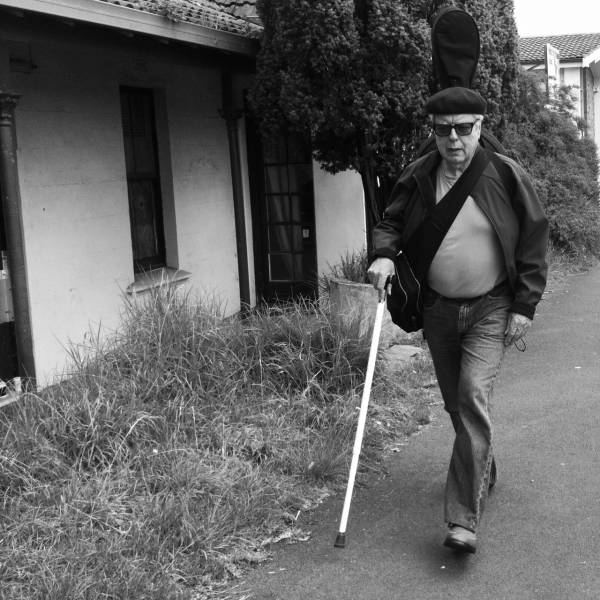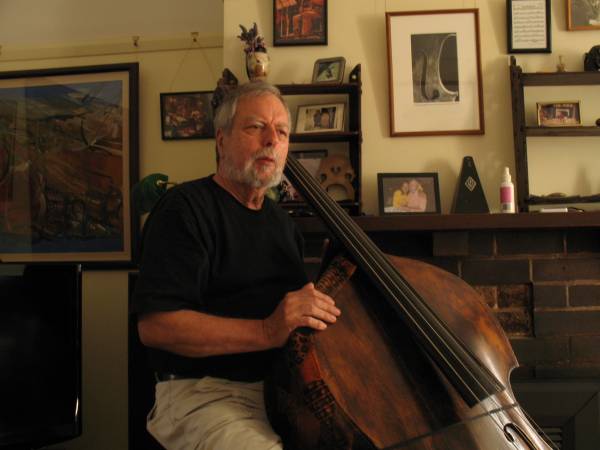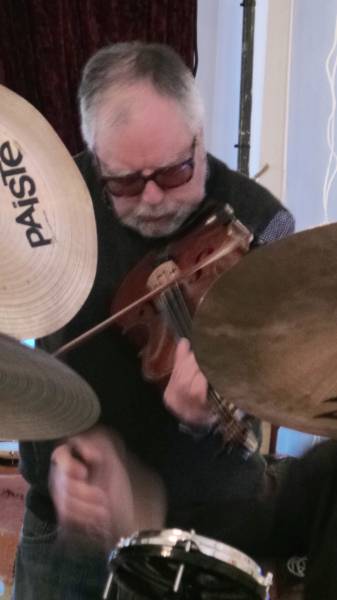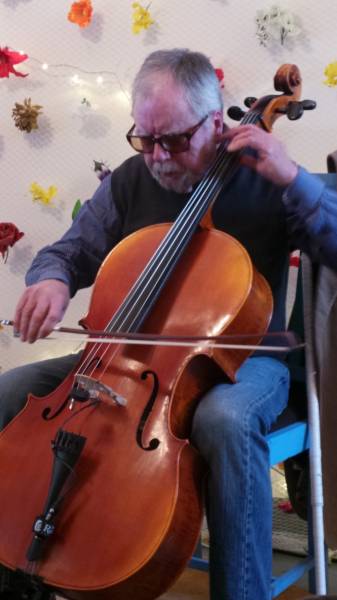
Just the saxophonists that Bruce Cale has worked with tell you much about his career: Phil Woods, Ernie Watts, Zoot Sims, Anthony Braxton, Trevor Watts, John Klemmer, John Handy, Tubby Hayes, Prince Lasha and many more. Other collaborators include Bobby Hackett, Billy Eckstine, Kenny Wheeler, Larry Adler, Rick Laird, Dudley Moore and Shelly Mann, to barely scratch the surface. Add the phalanx of eminent Australian players and the host of his classical compositions to have won prestigious prizes or been performed by our major orchestras and the scale of Cale’s career materializes.
These days he resides in the Blue Mountains west of Sydney, where he was born in 1939. At nine he was given his father’s violin, which he studied for six years, before flirting with saxophone and then buying a double bass. Meanwhile he discovered jazz.
The gigs soon flowed and his day job was discarded. In 1962 he joined the quartet of pianist Bryce Rohde, fresh from his US success with the Australian Jazz Quintet. As Rohde had done, Cale immersed himself in George Russell’s The Lydian Chromatic Concept of Tonal Organization, which became a major influence on his approach to improvisation, he says, because ‘it allowed you to play lines that wee different than what your ear would tell you with ordinary harmony’. Also crucial was US bassist Ed Gaston, whom Cale heard as a model for fluidity of groove at a time when most local bassists sounded to him like they were ‘in a German marching band – including me!’. Then there was Scott LaFaro’s revolutionary melodic playing with Bill Evans, facilitated by using three fingers of the right hand.

Via Rohde’s band’s frequent radio broadcasts Cale heard himself often enough to discern an emerging voice of his own. ‘What exaggerated that,’ he says, ‘was that I was using a lot of glissandi in my playing to reach notes – not because I couldn’t hit them spot on, but I just had this fascination for sliding notes.’
This sense of self in his playing and the evaporation of any need for influences increased when he moved to England in 1965 and joined the free-improvising Spontaneous Music Ensemble (SME), founded by drummer John Stevens, whom he met when playing with the great saxophonist Tubby Hayes. With Cale and saxophonist Trevor Watts on board the first version of the SME was born. Players of the calibre of Steve Lacy sat in, Kenny Wheeler became a member, and, when Cale left, Dave Holland replaced him. Cale believes that playing with the SME accelerated the emergence of his own creativity in a way that may not have happened had he just continued playing bebop. His 18 months in London resulted in recordings with Hayes, the SME and the US alto saxophonist Prince Lasha.

A scholarship to Boston’s Berklee College of Music saw him arrive in the US with $110 and Lasha’s enthusiastic recommendation. The latter led to a storming album for New York’s ESP label under the leadership of drummer James Zitro. At Berklee fellow students included Ernie Watts, Alan Broadbent, Joe LaBarbera, Jack Walrath, Mick Goodrick and John Abercrombie, among others: a pool of players with whom he would interact across the years, even though he only stayed for one semester (after which he felt that the hole in his harmony knowledge had been plugged). Instead he began gigging, and also formed his first band as leader/composer.
During his decade in the US Cale moved between coasts and toured and/or recorded in the bands of Zoot Sims, John Handy, Ernie Watts and Jack Walrath. He also joined the fusion outfit Contraband (which led to him playing with Phil Woods when the saxophonist came to LA) and played violin with Anthony Braxton. Along the way he rubbed shoulders with some of the greats of jazz, including sharing a joint with Thelonious Monk! He went backstage at a Mils Davis gig in LA to say hello to Dave Holland and Chick Corea. When they started talking about Scientology to him, he had Miles Davis wink at him and say to the others, “You’re not telling a grown man that shit, are you?!”
Contraband’s pianist Pete Robinson (later film composer Peter Manning Robinson) introduced Cale to Stravinsky’s music, and when the bassist left LA in mid-1971 to work with Bryce Rohde in San Francisco gig he began writing classical compositions. His very first orchestral piece, Land of the Aborigine, was recorded by the Melbourne Symphony Orchestra, which made Cale realise he could do this, too.
Returning to Australia in 1977 he formed the Bruce Cale Quartet and the 10-piece Bruce Cale Orchestra. The quartet’s various line-ups included Paul McNamara, Bob Bertles and Alan Turnbull, and culminated in an explosive version with Dale Barlow, Roger Frampton and Phil Treloar, of which Tall Poppies has released two retrospective albums. ‘It was perfect for me,’ he says of this band. ‘They would always play the music as well as it could be played.’ His Orchestra, meanwhile, lasted for seven years, including having Ernie Watts guest with them.

Cale describes a 10-day seminar he attended with George Russell in 1981 as ‘the best thing I ever did. He and I clicked.’ Meanwhile classical commissions flowed, including a double bass concerto for the MSO that he played himself, and concertos for violin and cello. Gradually he came to see composing as a priority over playing. ‘I was probably enchanted by the lovely feeling of sitting in my home at Hampton [west of the Blue Mountains] looking out across the valleys and dreaming up music for symphony orchestras,’ he says. The dreaming led to Cale winning three major Australian composition prizes.
He portrays the complexity of composing as ‘almost scientific’: ‘I never credited myself with having an intellect, but there is an acquired intellect, which probably came out of the George Russell concept. And I took his concept even further. George used the [piano] piece that won the Jean Bogan Prize at one of his university lectures as an example of what can be created out of the Lydian concept, and I was absolutely stoked at that. I created another system on top of his system that extended it even further. He never saw it, but he heard the music and said, “I know you’ve gone beyond what I wrote.” That sort of complexity just fascinates me.’
Nonetheless he sees Cale the composer and Cale the intuitive improviser as being very much the same personality.
In the ’90s opportunities to have his works performed waned, and a growing impairment to his vision made scoring difficult. He moved from Hampton to Queensland (where he made a limited return to playing), and then to Tasmania, where he was entirely disengaged from music until he took up viola. When he returned to Katoomba in 2012 he also returned to the violin, more recently adding cello – possibly the instrument he was meant to play all along – to his arsenal. Owing to the onset of severe macular degeneration Cale now finds composing problematic, but thanks to an improvising duo with the current writer (drums, percussion) called Dreams of Falling, and many collaborations at Katoomba’s Hotel Blue over the last two years with players including Kevin Hunt, Jeremy Sawkins, Gary Daley, Sandy Evans and James Greening, he describes the present phase as ‘creatively charged’. Like his mind.
Links: